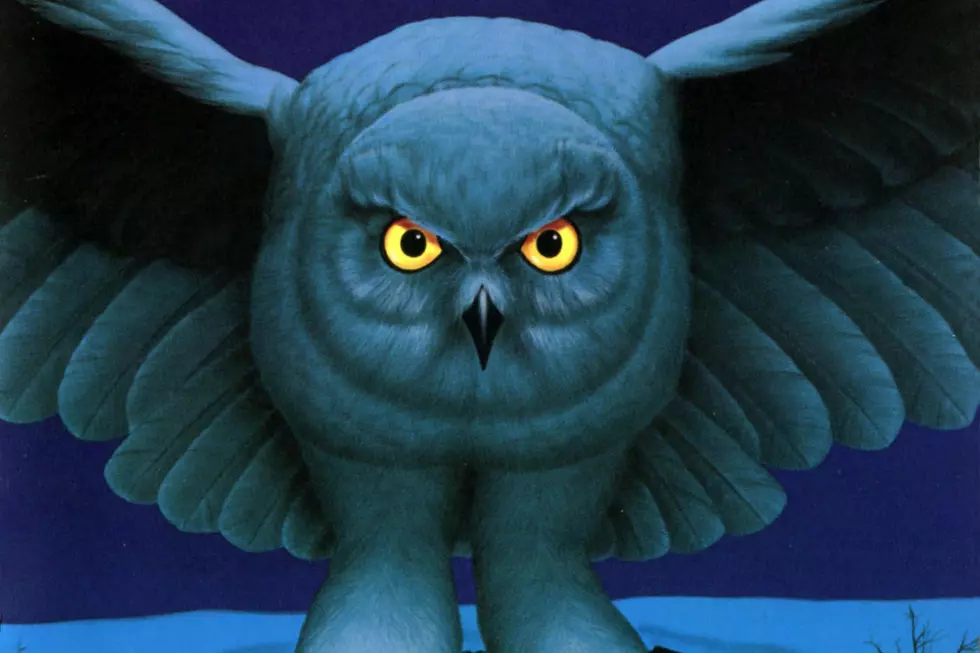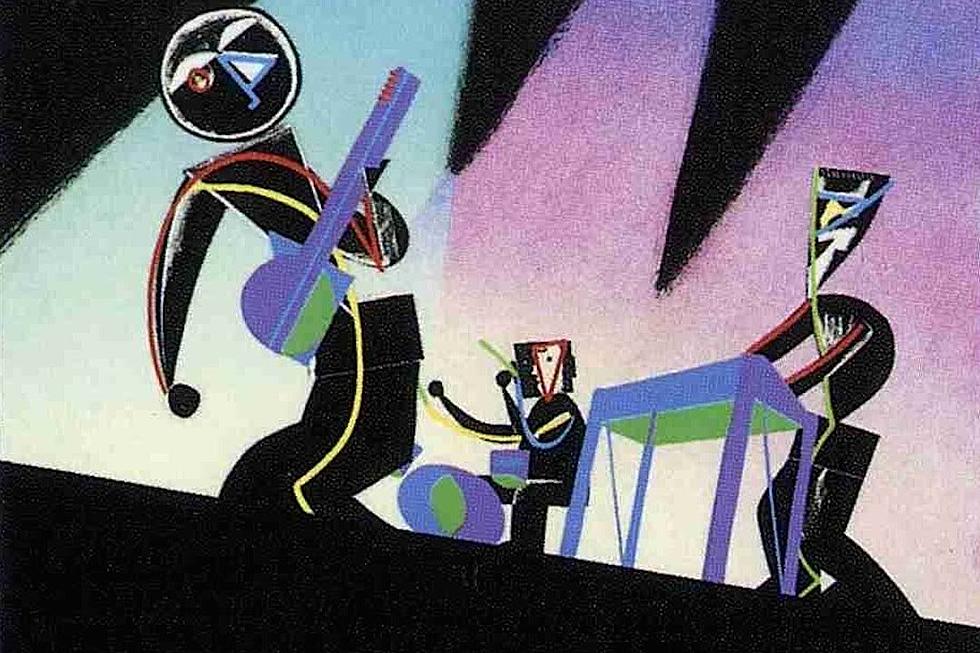
How Rush Began the Neil Peart Era With ‘Fly by Night’
Fly by Night is technically the second Rush album – though, from a creative standpoint, it's the true starting point of the band's genius. With the addition of lyricist-drum god Neil Peart, bassist-frontman Geddy Lee and guitarist Alex Lifeson were now able to propel their music to its proggy peaks.
Peart joined Rush on July 29, 1974, following the departure of original drummer John Rutsey and the release of the band's self-titled debut LP. In December, the new version of Rush entered Toronto Sound Studios with producer Terry Brown, pursuing a more complex – and, overall, more satisfying – musical direction.
Peart's drumming brought focus and zest to the band's arrangements, best evidenced by the frenzied tom-tom fills the shapeshifting title-track and the propulsive assault of opener "Anthem." But he made as much of an impact as a lyricist, adding another dimension to their style with his fanciful images and compelling narratives. (Lee and Lifeson, who'd disinterestedly written the words on their debut, quickly saddled the newbie with this new role after noticing his prolific reading.)
On the wintry acoustic ballad "Rivendell," Peart earned further prog credentials by romanticizing the titular elven utopia (the "elven songs and endless nights") from The Hobbit and Lord of the Rings. But "By-Tor & the Snow Dog" was a true breakthrough for the band, marking their first attempt at a pseudo-longform prog-rock epic. Manic riffs, tumbling drum solos, ambient textures: This track, with its four stitched-together sections, crammed all of the band's musical ambition into one eight-minute blast.
The song's beginnings were far less grandiose. "People think we're such a serious band," Lee told Prog magazine in 2013, "but really, we're just your typical idiots. 'By-Tor and the Snow Dog' was a joke that got out of control. Our manager Ray had two dogs, and Howard Ungerleider – our lighting guy – called them Biter and Snow Dog. We must have been high one day, imagining a song about these two dogs. And then Neil went ahead and wrote it."
Lee says that this sudden shift in direction – toward nerdy mythology and winding song structures – worried the record-company brass, who'd expected the band to continue cranking out simple, hard-rock tracks like their breakout regional hit "Working Man." "They said, 'This is not the same," Lee continued. "What is this 'By-Tor' shit? You were talking about 'Working Man,' and now you're talking about this crazy stuff.' It was a bit of hiccup in the plan they had for us."
But even then, Rush knew Fly by Night was a rebirth – and they were dead-set on chasing their expansive vision wherever it took them. "It showed a progression from the first album," Lee told Circus Raves in 1975. "We're very happy with it. We recorded it as an album. Singles would be nice, but that's incidental."
Listen to Rush Perform 'By-Tor & the Snow Dog'
Released on Feb. 15, 1975, Fly by Night cracked the Billboard 200 at No. 113 – a slight dip from the performance of their debut, which made it to No. 106. But it was clear Rush weren't interested in bowing down to label demands. In interviews, they were already emphasizing Peart's talents as an unconventional lyricist – particularly on "By-Tor." "All the music in that relates to the story," the band said in a contemporary news release. "It has visual sounds, monsters, screeching animals. It's where we want to head."
Meanwhile, "Anthem" has become more than the true sing-along classic from Fly by Night. It's the turning-point moment when everything came together for Rush.
"This song has one particular memory for me that supersedes all: the first time we ever jammed with Neil, first time he auditioned for us," Lee told Rolling Stone in 2013. "Alex and I had written this riff, and we had written it back in the day when Rutsey was in the band, and Rutsey wasn't into playing it. It was too complicated, and it wasn't his thing. He was more into straight-ahead rock and roll. Among the other things, we jammed with Neil the first day we met him on this opening riff. When he started playing, we looked at each other and were like, 'Yeah, this is the guy. He can play. He'll do.' I can't even ponder what would have happened had we not met him. Life is bizarre. Twists and turns. Fate brought him to our doorstep that day."
Lifeson also noted the significance of "Anthem" in a 2013 career overview with Guitar World. “We were trying to be quite individual with Fly by Night, which was the first record that Neil, Geddy and I did together," he said. "That song was the signature for that album. Coincidentally, the name of our record company, which is Anthem Records in Canada, came from this song. Neil was in an Ayn Rand [author of The Fountainhead] period, so he wrote the song about being very individual. We thought we were doing something that was different from everybody else."
In 1975, Rush were still forming their identity as a trio. Tellingly, the album's writing credits remain a bit scattered: Lee wrote the lyrics for the straight-ahead, by-numbers rocker "Best I Can" and the music on "Rivendell" and the title-track, while Lifeson is solely credited for the music on the pogoing "Beneath, Between & Behind." As arrangers, Rush were miles away from the majestical sprawl of 2112 or Hemispheres – and they hadn't quite shed their early Led Zep-Cream obsession.
But Rush's second album proved they were more than simple-minded "Working Men." They were sonic and lyrical dreamers on the verge of becoming progressive rock icons. Decades later, the explosive energy and charm of Fly by Night make it just as vital.
Top 50 Progressive Rock Albums
The Rush / Metallica Team-Up That Slipped Away
More From Ultimate Classic Rock









